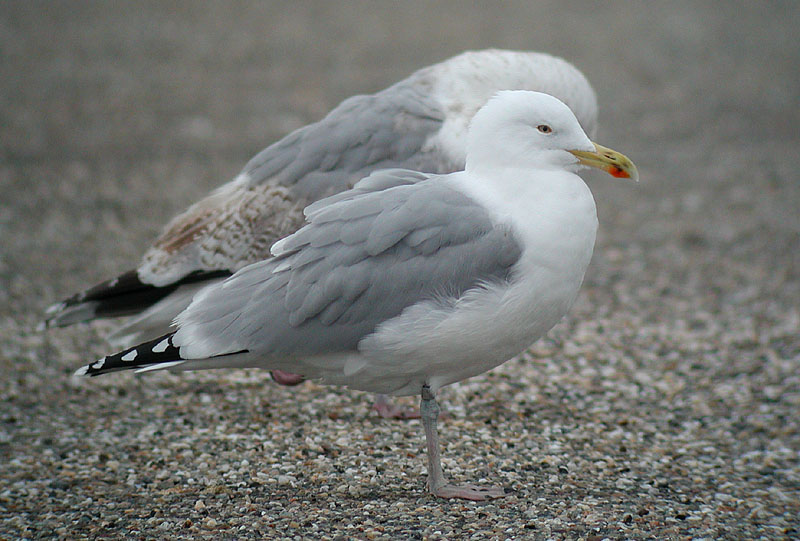 Herring
Gull - Zilvermeeuw (argentatus & argenteus)
Herring
Gull - Zilvermeeuw (argentatus & argenteus)
(last update: 01 april 2004)
Home
Links
to Gull Sites
Gull Taxa
Gull Topography
Grey & Colour Charts
Locations in NW Europe
Summaries of Articles
About ORG
@
Herring Gull 5.281.1705cy (argenteus), March 10 2004, Brouwersdam, the Netherlands (51.45N 03.52E).
A Dutch ringed 5cy:
Arnhem 5.281.170. Ringed 08 July 2000 at Texel, Netherlands. A typical Dutch argenteus.
The head is complete white, all winter streaking absent. Adult argenteus
may already return to the colonies in
January-February,
maybe depending on the weather conditions (mild winters north
to 53° latitude along the coast of the North Sea). It's unknown in what way and to what extend
weather conditions influence body feather moult, but from January onwards,
adults may appear with snow-white heads. From late January and
certainly from the first week of February, males start defending
territories on the roofs of the industrial complexes in the harbour of
IJmuiden and in the colonies of the Maasvlakte, near Rotterdam.
From the second week of February onwards, adult argenteus from
the Netherlands are in active moult on the head. This is often obvious in
the feathers around the eye, which are shed by the second week of
February, leaving a naked ring around the eye (visible at close range).
Note the orange orbital ring and black on the bill (possible
in full adult birds as well).
